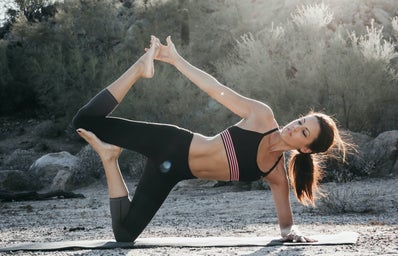Winter break is fast approaching and soon the precious gyms and recreation centers we’ve come to hate or love are to be stripped from our hands. As winter is prime-time for weight gain, we feel pressured to work out but often times don’t have the resources. Fortunately for the rest of us, some genius came up with the Prison Cell Workout.
What is that?
The Prison Cell Workout is a series of bodyweight movements that one can do in a restricted space. The overall plan as I’ve come to understand it is:
Day 1 – Upper Body
Day 2 – Lower Body
Day 3 – Total Body
Day 4 – Rest
(Added by me) Day 5 – Core
But within that plan there’s quite a bit of variation. The original plan only had days 1-4, but I felt a day dedicated specifically to core was necessary.
Upper Body:
The Basics: Push-ups, Pull ups, Tricep Dips
These exercises utilize your body weight to account for the lack of lifting materials. As a beginning, I’d try doing each movement in 3 sets of 10-15 reps. Then if you need more variety or difficulty, take on variations such as: diamond push-ups, wide grip push-ups, clapping push-ups, close grip pull ups, wide grip pull ups, chin ups, one legged dips, reverse grip dips, and one armed dips.
Lower Body:
The Basics: Squats, Lunges
These are pretty self-explanatory for why they’re effective in this setting. I feel the key is in the variation here. Begin with the same set-rep sequence as upper body: 3 sets of 10 to 15 reps. Then, turn up the intensity by adding variations such as: close legged squats, wide legged squats, one legged squats, jump squats, forward lunges, reverse lunges, side lunges, and curtsy lunges.
Total Body:
The Basics: Burpees, jogging in place, jumping jacks, mountain climbers, knee ups
This tends to be the day with the most variety in terms of movements. Some convicts took the opportunity to do cardio on this day, others core. For this reason I’ve made the total body day cardio, because the movements I chose lent themselves more easily to this structure. Try starting out by doing each movement in repetition for the length of a song. Then, adjust from there. If you need more intensity, speed up your movements or lengthen the time you do them and if you need less intensity, do the opposite.
BONUS – Core:
The basics: crunches, oblique crunches, leg raises, planks
The variations here are ENDLESS. You can switch up crunches by doing anything from straightening your legs to the ceiling to having them open and flat against the floor. Literally anything in between is a variation. With oblique crunches, there’s less variety, but you can go from lying on one side and crunching up to the ceiling to crossing your upper body from the standard squat position. You can vary leg raises by the angle of your legs, how far you extend them and doing one leg at a time. Planks are equally as various as crunches, but I’d stick with side planks, normal planks and planks with one leg raised. To start though, I’d try the 3 sets of 15 reps here as well.
Why should I do it?
Now, while I wouldn’t recommend getting yourself incarcerated, I’d recommend this workout for an easy way to stay fit without equipment in a restricted space. The movements are basic and very easily changed to suit your fitness needs, which is what makes it so accessible. The length for which you work out and the difficulty are based completely on you and your schedule. This is an extremely flexible program that allows you to maintain fitness, or even just get started working out.


